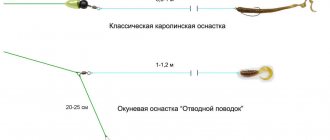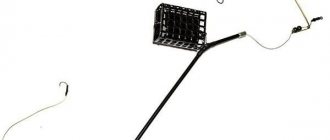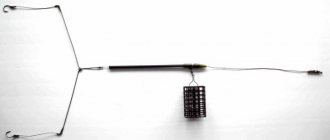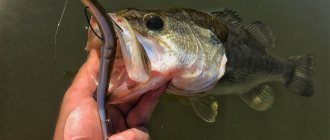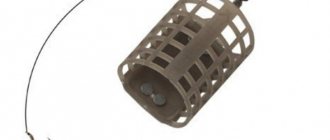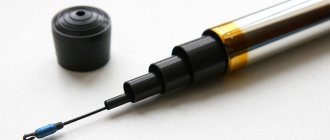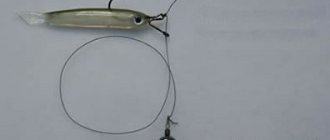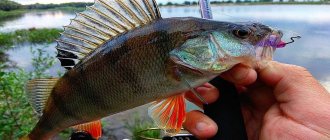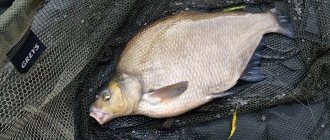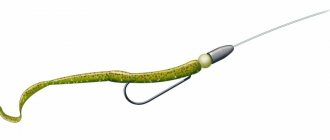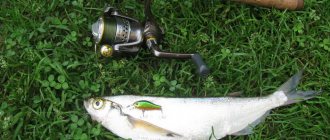When is it used?
Installation of a feeder with a feeder is used by fishermen in exceptional conditions:
- Strong current;
- Unsuitable depth for classic gear;
- Unique large fish that spinning rods may not be able to handle;
- The fishing point is far from the shore.
The feeder allows you to immerse the implement as deep as the fisherman requires. It also distributes complementary foods in a limited area, increasing productivity.

Selecting a device depending on the fishing location
To choose the best installations for the feeder, we focus on the characteristics of the reservoir:
Weak current or its complete absence. A trap with a lightweight design (10-15 g) is used. It needs to be washed out quickly and distributed evenly on the bottom. The usual mixture is diluted with maggot dolls (for loosening).
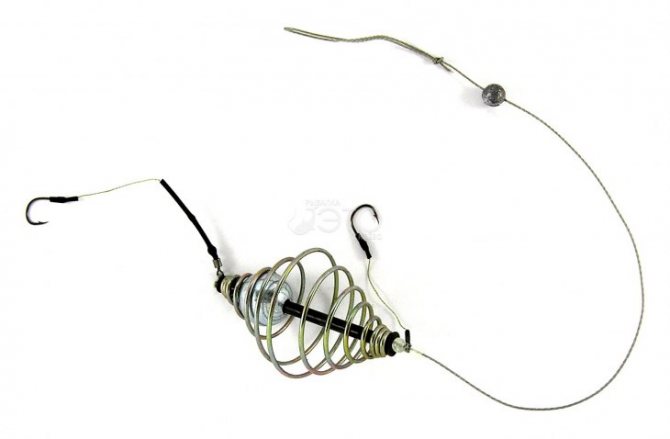
Rivers with moderate and slow flow. Cylindrical feeders are used, mainly for catching bream. The device is convenient in that it can be of an open or closed type, depending on the requirements of the fisherman.
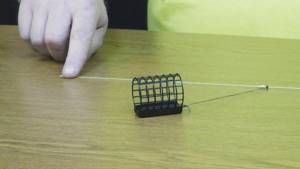
The tackle is very sensitive, so you can’t just use worms, they are quickly washed out of the feeder. It is better to use classic bait mixed with maggots.
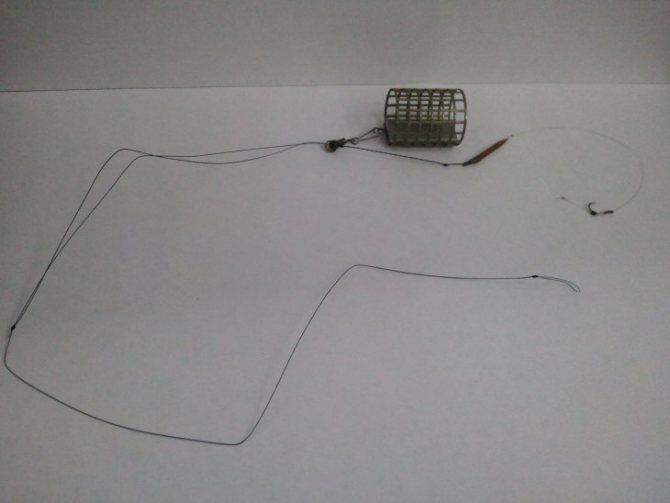
Deep-sea reservoirs. Cone-shaped feeders are used.
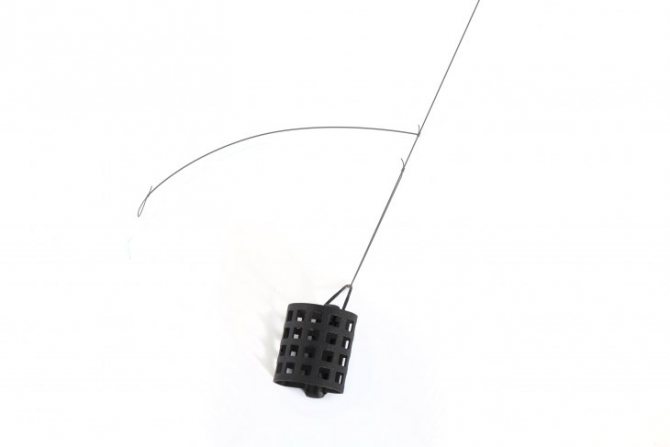
At depths without current, the fish is very mobile. Therefore, she needs to offer standing complementary foods that are not immediately washed out of the cone-shaped feeder.
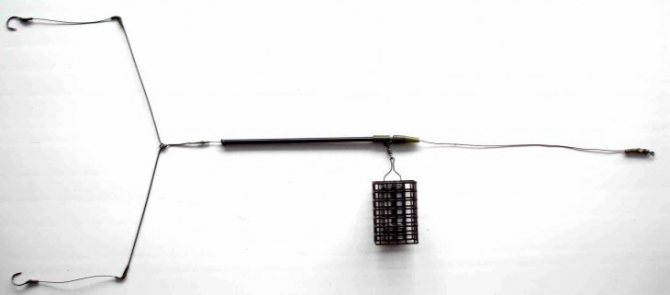
Synthetic flavors are added to the classic bait of crackers, semolina porridge, flax seeds and nuts.
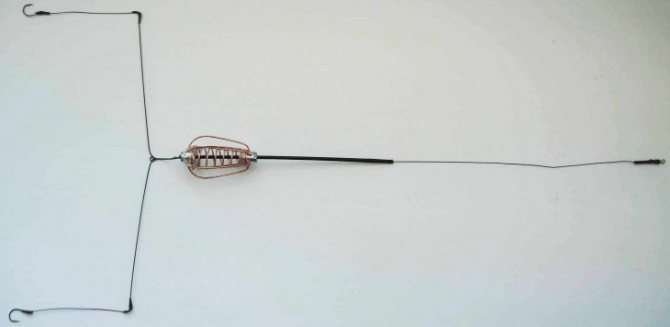
DIY feeder tackle
The fishing activity of the fish and, of course, the size of the catch largely depend on the correctly selected fishing equipment, as well as the correctness of its manufacture. For feeder fishing, a special rod is used.
The length of this part of the tackle depends on the reservoir where the fishing will be carried out. For large bodies of water with strong currents, a rod of 4 meters or more is suitable. The structure depends on the expected size of the fish. A slow action is suitable for small fish.
When constructing feeder gear, a spinning reel is used, since with its help it is possible to cast a hook with bait over long distances.
The fishing line needs to be thick, at least 0.2–0.3 mm . It is best to use braid with a diameter of 0.12 to 0.14 mm.
Leashes are made from fishing line with a thickness of 0.18–0.2 mm, which in turn should have a length of 20 to 60 centimeters. As a signaling device, you can use an electronic bite alarm or bells.
Feeders for attracting fish are available in a variety of designs and weights. The most important thing is that the weight of this device should not exceed 2 digits in the rod test.
There are the following designs of feeders:
- spiral;
- cell;
- cones with displaced load;
There are no design requirements, so everyone can choose something convenient for themselves.

Classification
The feeder is chosen depending on the class. There are 3 of them in total:
- Easy
- Average
- Heavy
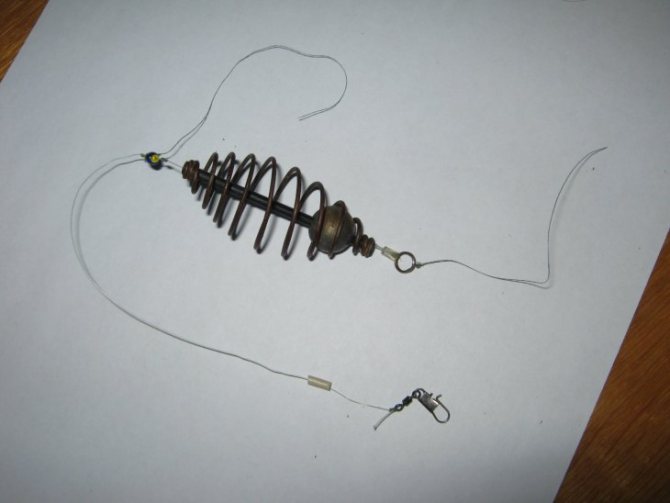
The vast majority prefer the middle class. The versatility of the device allows you to adapt it to many fish, as well as to different features of reservoirs.
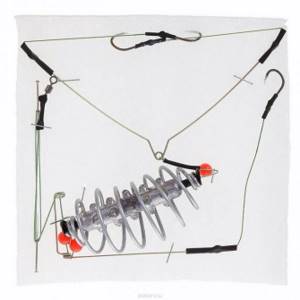
Equipment
Installation of feeder equipment includes work on the feeder and hooks. The main task is to connect everything necessary so that the angler notices the bite in time and has time to react.

Anti-twist
Used by beginners so as not to lose control of the device. Experienced fishermen refuse, because... The anti-twist tube may spook the fish.
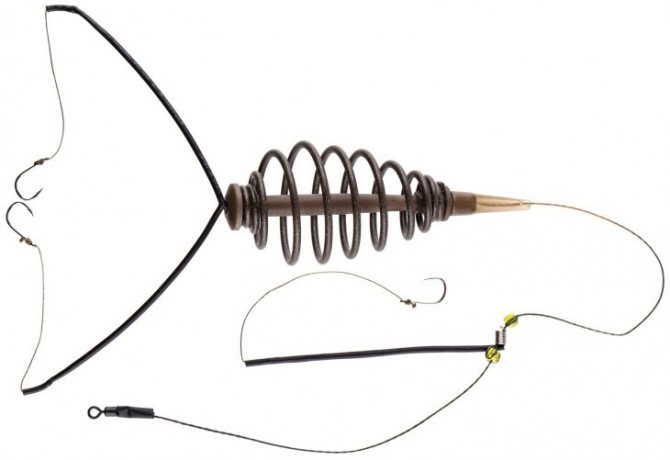
A swivel is tied to the fishing line, and a rubber or silicone bead is put on it. Then they pass it through the anti-twist and tie it to a swivel with a carabiner. The leash with the float is attached separately.

Note!
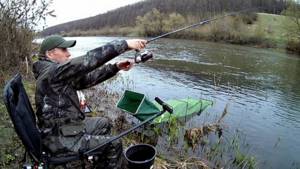
How to fish with pickerel? Equipment features, technology and fishing tactics (105 photos and videos)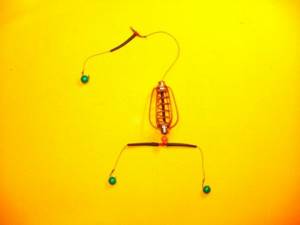
Feeder tackle: basic methods of use, components and fishing techniques for beginners

Bite alarm for feeder - the best electronic and mechanical models and tips for their use (110 photos + video)
It is better to study the photo of the installation of the feeder with an anti-locker in order to choose the correct distance between the feeder and the leash, otherwise there is a risk of missing the prey.
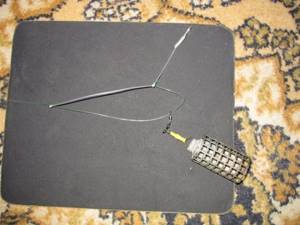
Feeder equipment - basic installations
After purchasing everything you need (feeders, fasteners, swivels, hooks and thin leader line), you can begin installing the feeder gear. There are several types of feeder equipment, and all of them are easy to manufacture. Let's look at the most common installations.
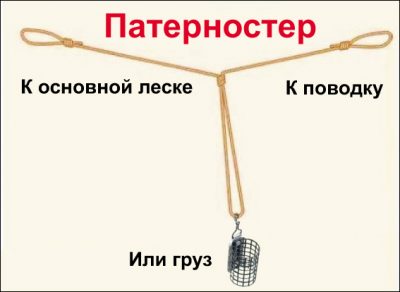
Paternoster. It is done both on monofilament fishing line and on braid. This installation involves the use of mesh-type feeders, which have a small eyelet for fastening. First, a 10-centimeter loop is knitted on the fishing line with a triple knot so that the end remains at least 30 cm. A swivel with a clasp is installed on the loop, to which the feeder is connected. At the remaining end, another loop is made to connect to the leash. It is better to attach it in a simple but reliable way, which fishermen call “loop to loop”. That's all, actually. The paternoster is ready.- Asymmetrical loop. Typically, such feeder equipment is mounted on a monofilament thread. A piece of fishing line one meter long is folded in half and a small loop is knitted on the fold for a finger to fit through. Having inserted one of the fingers into it (whichever is more convenient), the separated ends begin to twist tightly and continue to do this until the twist reaches at least 10 cm. It will serve as a rigid outlet for the leash, hook and bait from the feeder. At the end of the twist, a knot is also made (it will not allow it to unwind).
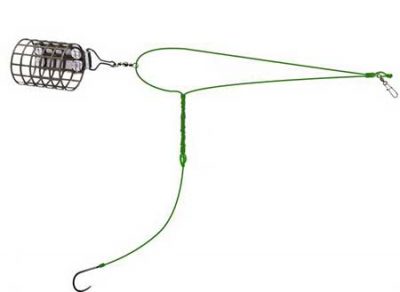
A swivel with a fastener is put on one of the remaining ends and a feeder is installed. After this, you need to move it a couple of centimeters away from the knot, and then tie both ends of the fishing line. As a result, the part with the feeder will turn out a little longer. After the last knot, the main line is attached through a swivel. The leash with a hook is knitted in a loop-to-loop twist. This installation is a little more complicated than the previous one, but not so much as to refuse it. - Helicopter. One of the best options for feeder fishing on the current. It also works well in large water areas where long power casts are required. The helicopter is performed as follows. To begin with, the main fishing line must be folded in half, retreating about 40 cm from the end. At the bend, using a regular knot, make a large 10-centimeter loop for the feeder, and another knot is tied 2 cm from it. The feeder is installed through a swivel (with a clasp, of course). A leash with a loop at the end is secured between two previously tied knots. The helicopter does not have to be tied directly to the main line. It can be mounted separately and then connected to it in any suitable way.
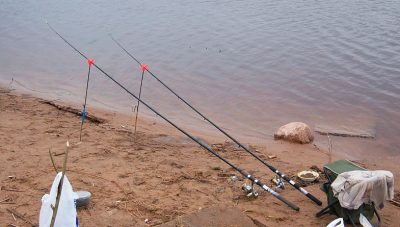
With the advent of each open water season, the best feeder equipment is improved and new ones appear. The debate about which rig is the most catchy never ends. To choose “yours”, you need to try all or at least the most popular ones. It is quite possible that a paternoster will be effective on one body of water, and an asymmetrical loop or inline on another. Then you will have to replenish your arsenal with all working options. In any case, you should proceed from your own practical experience and preferences. Now you know how to make feeder tackle. Video on the topic:
Fishing. Do-it-yourself feeder tackle.
11:00
FEEDER FISHING for BEGINNERS. ENCYCLOPEDIA OF FEEDER FISHING
26:51
Paternoster
Ideal for agile and aggressive fish. The installation feature is independent cutting.
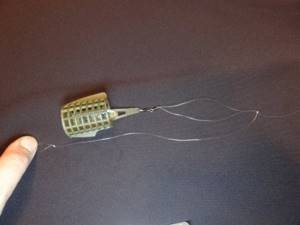
The equipment elements are tied to one fishing line, so it must be of high quality. Knit several loops at a distance of 20-30 cm from each other. The second loop is for the feeder, it must match in diameter. Next, make a small loop without attaching a leash.
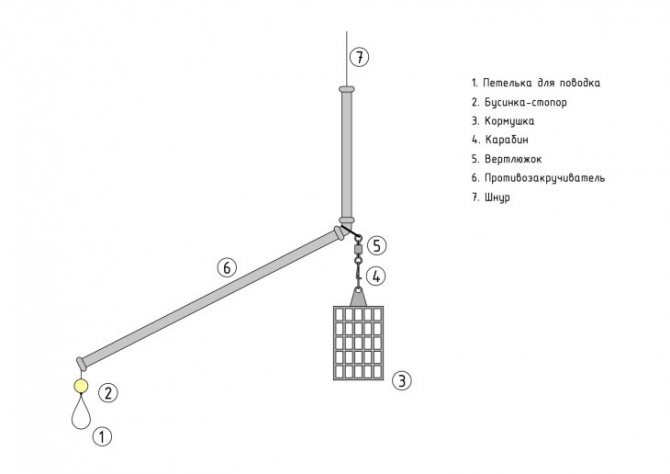
There is a second option - tie a loop at the end of the fishing line, divide it into two parts, and attach a swivel to each of them. A feeder is threaded into another loop, with a leash next to it.
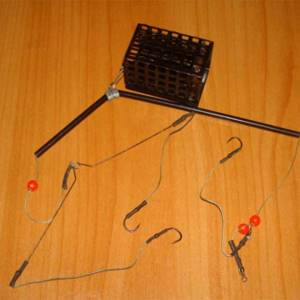
How to catch crucian carp on a feeder
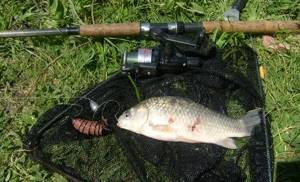
Having decided on the fishing location, the fisherman prepares the so-called feeding table, loading 10–15 initial volumetric feeders into a promising point on the bottom of the reservoir. Complementary food is served with high precision, clipping the cord to maintain the distance and determining the delivery beacon. Complementary foods are given naked, without an animal component. Having fed the point, you can start fishing after 20–30 minutes, charging the feeder with the inclusion of bloodworms or maggots in the complementary food. The first bite is expected in about 5–7 minutes. If there are none, a recast is made, with a change of food and bait.
After an hour of fishing and no results, it is wise to change the location or direction of casting, again preparing the bait spot. A fish approaching the bait detects itself with a sharp single bite with a further attenuation of the signal, which resumes after about five seconds with constant trembling and stable sound delivery. The fish, in most cases, has already reliably taken the bait and the angler begins to fish, winding the line with a reel, trying to keep it in constant tension. Otherwise, the cunning fish, sensing weakness, will easily spit out the hook.
The crucian carp goes to the shore reluctantly, resisting and trying to move to the side towards the shelter. Below the shore, the catch is taken into a landing net. In late autumn, crucian carp bite on the feeder less actively, detecting a bite only with a tiny flinch of the alarm. Having noticed the signal, you should try to hook the fish by sharply pulling the rod towards you, while simultaneously winding the cord, thereby trying to fix the tip of the hook in the lips of the fish trying the bait.
Asymmetrical loop
Used when catching cautious and accurate fish. Bites will be visible if the prey has already become accustomed to the feeder and begins to use the bait carefully.
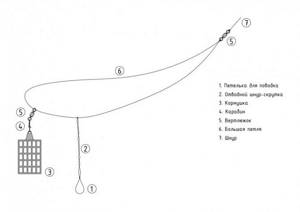
Note!

Catching carp on a feeder: the subtleties of fishing and advice from professionals on how to catch carp using different methods (110 photos)
Catching crucian carp on a feeder - tips and secrets of professionals. 115 photos and videos master class for beginners
- Bait for the feeder - popular mistakes, recipes and do-it-yourself bait. Ingredients for bait (110 photos)
The end of the fishing line is threaded through a swivel, where a large 50 cm loop is tied. Separately, a feeder is tied to the swivel. The large loop is divided into two (of different sizes, hence the name). A carabiner is attached to one, and a leash to the other.
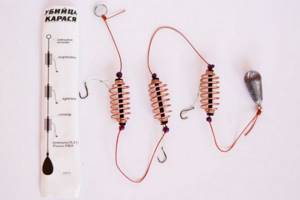
Which attachments to use
When fishing for carp in muddy reservoirs, it is best to use boilies (only solid ones) as bait. In terms of taste, “fruit” products are perfect. Mandatory conditions for baited boilies (especially for muddy bottoms) are a bright color (normally contrasting with the dark surface of the bottom) and maximum aroma (able to overcome the quickly ingrained smell of mud). As for the latter, English fishermen perform the so-called “rehydration” of boilies for this purpose. In other words, they are soaked for a while in a solution of nutritional supplements in combination with the hemp oil mentioned above.

Symmetrical loop
It is the most popular due to its simplicity, the absence of additional fasteners or intricate elements.
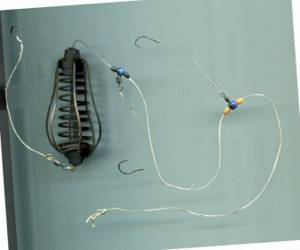
Half a meter of fishing line is knitted in a figure eight into a loop, and a leash is attached to it. A carbine and swivel are threaded into the free end. The other end is for a rubber bead if the feeder is heavy. Otherwise, the cormak just clings.
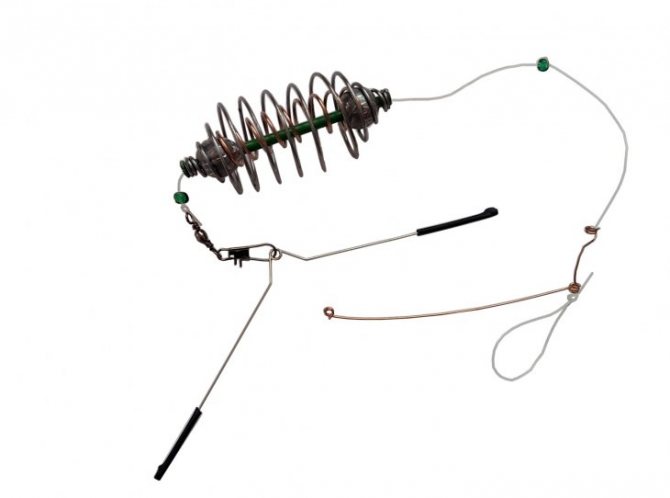
Inline equipment for feeder
There are many options for inline gear for a feeder, but technically they are implemented in two versions:
- Unlimited sliding - the movement of the bait container is not restrained by anything. Self-cutting is unlikely.
- Stopper limitation. There may be one or two dampers.
The second option is universal, since if you move the stopper towards the feeder, you will get a blind paternoster. Removing the damper from the container by 12-15 cm will immediately transform the limited installation of feeder inline into loops: symmetrical or asymmetrical.
Sliding rigs
This group includes feed containers with a through channel for fishing line: watermelons, spring containers with rocker arms and many other configurations. Techniques: helicopter, loops.
Running
This is the inline feeder rig that recreational fishermen have in mind when they talk about sliding rigging. In running fishing lines, shock leaders pass through a swivel to which feeders are attached: bullets, “cages”, curlers.
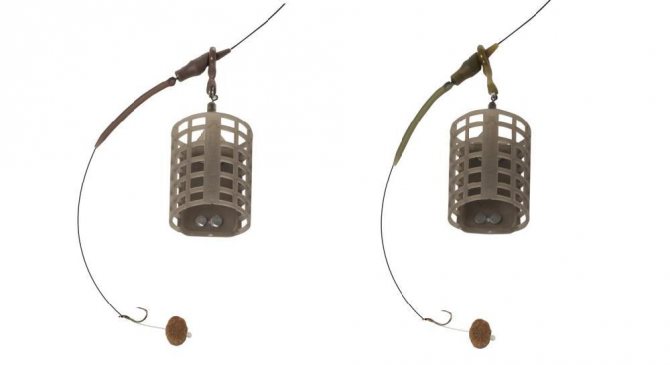
Running
Make such equipment using monofilament and braid. The feeder moves freely along the cord, without alerting the fish during their feast. However, the sensitivity of the bite alarm is increased many times: the “nodding” tip reacts to the smallest representatives of river fauna.
Self-hooking is rare, so the entire responsibility for hooking and landing lies with you.
Method and flat
Open flat feeders with a thick bottom are designed for standing water, otherwise the feed will be carried away by the flow. The installation principle does not change; it is suitable for carp fishing.
Carp anglers use an open flat feeder as a pacifier, pressing the hook inside. The evenly loaded bottom prevents the container from turning over; it always falls to the top with bait. The method works well over long distances, and in stagnant silted ponds it has no equal.
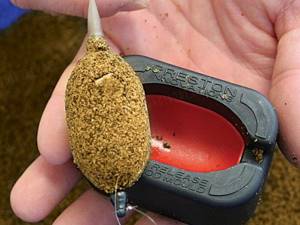
Method and flat
Considering that you intend to take trophy specimens on the flat, select the appropriate feeder: rod length is at least 3.9 m, test 150-180 g, action – medium.
For a successful hunt, take a bait rod when fishing: you will use it to explore the bottom and pre-feed the future catch.
Anti-twist
The main thread runs through the entire device, starting from the short arm. Next, a swivel with a stopper is attached to it, then a leash. The feeder is used with a heavy plastic bar.
From the ice
Winter feeder installation – installation in harsh weather conditions. Ice fishing gear differs only in that it uses stronger and thicker fishing lines, as well as other structural components.
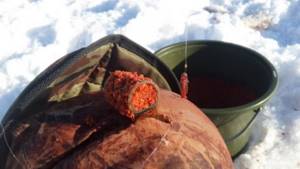
The winter feeder works as follows:
- A feeder is attached to the tackle
- The feeder is filled with complementary foods and goes down into the hole.
- Reaches the bottom, after which the leash is pulled tight
- When bitten they hook
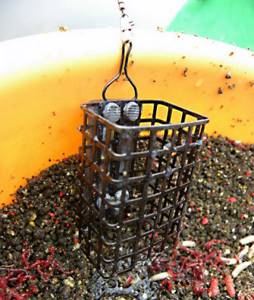
If there are no bites within 10 minutes, refill the feeder
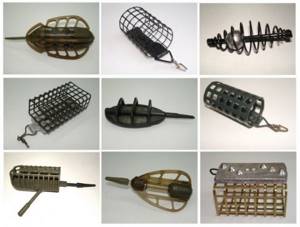
Experienced winter feeders recommend starting fishing with thorough feeding. In winter, the fish is hungry, so it will come to the right place faster if you provide it with plenty of food.

So, which sludge is good and which is bad?
Most anglers, when diligently searching for the most suitable fishing point on the bottom, try to follow strict rules: taking into account changes in depth, smooth transitions from hard to soft areas, etc. At the same time, absolutely “bypassing” all the silt. However, in fact, it can be different: on the one hand, completely unsuitable, and on the other, very useful. Let's take it in order.
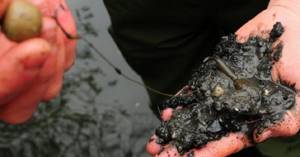
A clear example of “dead” unusable sludge that is dangerous to fish health
Unsuitable sludge
It is not difficult even for a beginner to correctly identify bad mud for carp fishing, since its characteristic features are a fetid odor and a characteristic black color. Moreover, if you touch it in your hands, it will immediately “unpleasantly” stick to them. In the “thickness” of such sludge, chemical reactions actively occur, the by-products of which are dangerous acids and methane. Therefore, it is easy to guess that living organisms will not survive in such an environment, which means that carp will not be able to profit from anything there. Moreover, he will even avoid these places.
Normal sludge
Unlike the previous version, this is already a good-smelling sludge, literally replete with a lot of nutrients for carp. And not only bloodworms, plankton, larvae or other “goodies” (found or stuck inside), but also minerals that are very useful for the body of carp. In addition, “living” sludge, unlike “dying” sludge, produces oxygen, which also attracts fish by nature.
Chod / "Chod" (English)
According to experienced carp anglers, it is considered an ideal point for carp fishing. You can even argue that many fishermen caught their trophies in precisely such places, without even realizing it (confusing the paths “compacted” by fish with the usual hard bottom). Basically, it is young silt, consisting of a wide variety of natural waste, mixed with living plants.
It is definitely worth noting that even after “cleaning” such places “cleanly”, carp after a while return to them again, since they have already found tasty food there.

Feeder installation photo
Read here Feeder leash - what should be the length of the leash and tips on how to tie the feeder (95 photos and videos)
Help the project, share on social networks 

0
